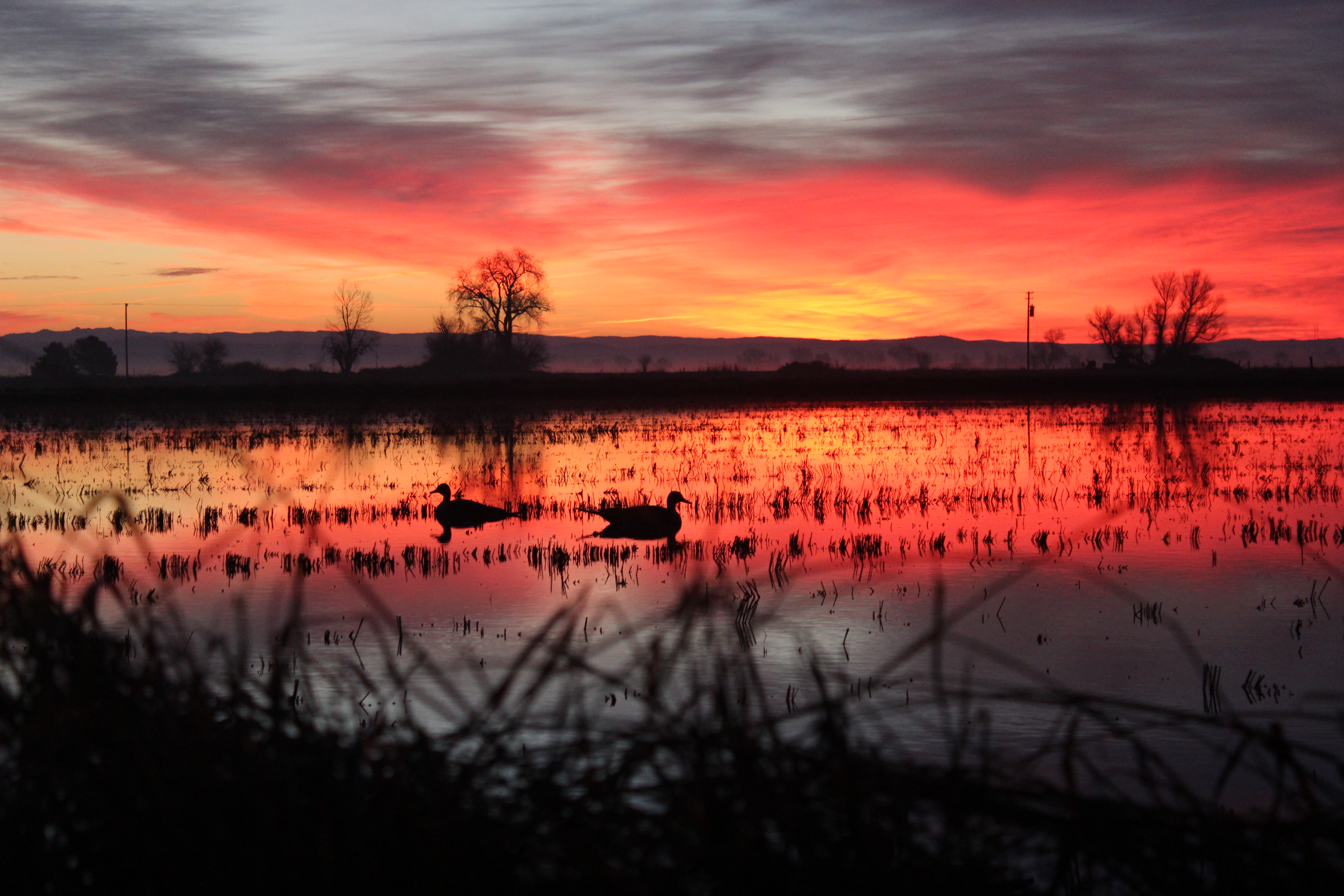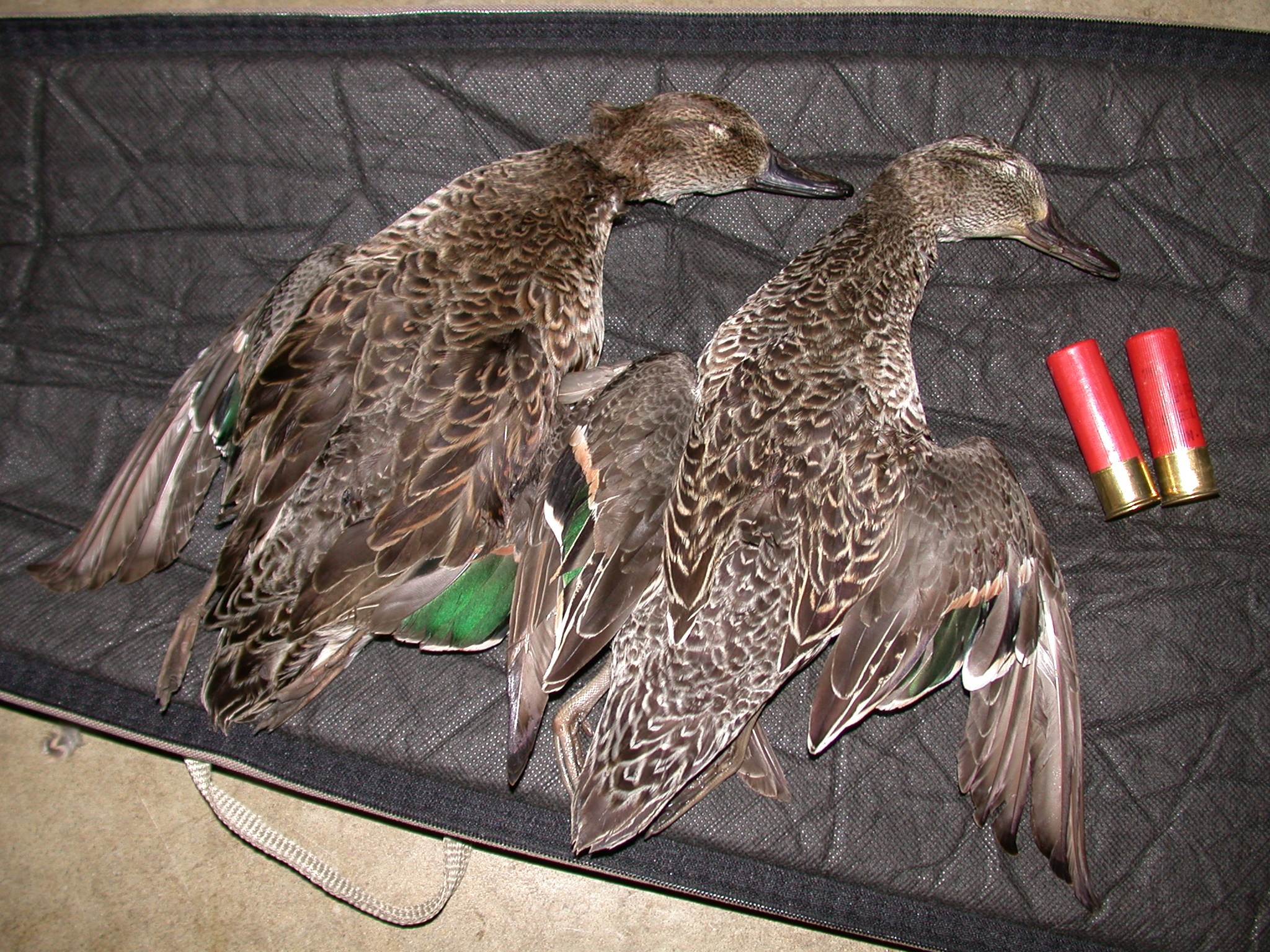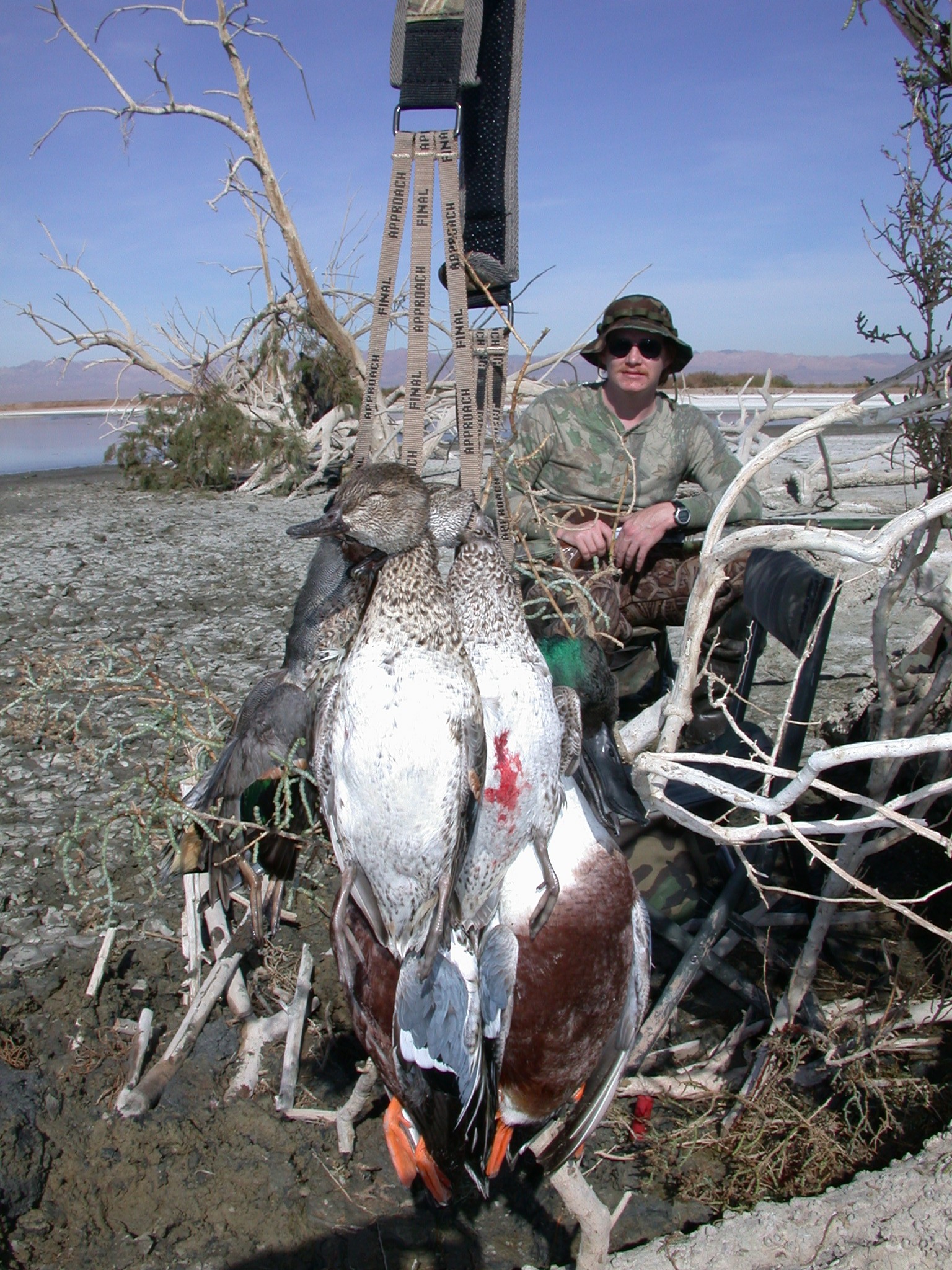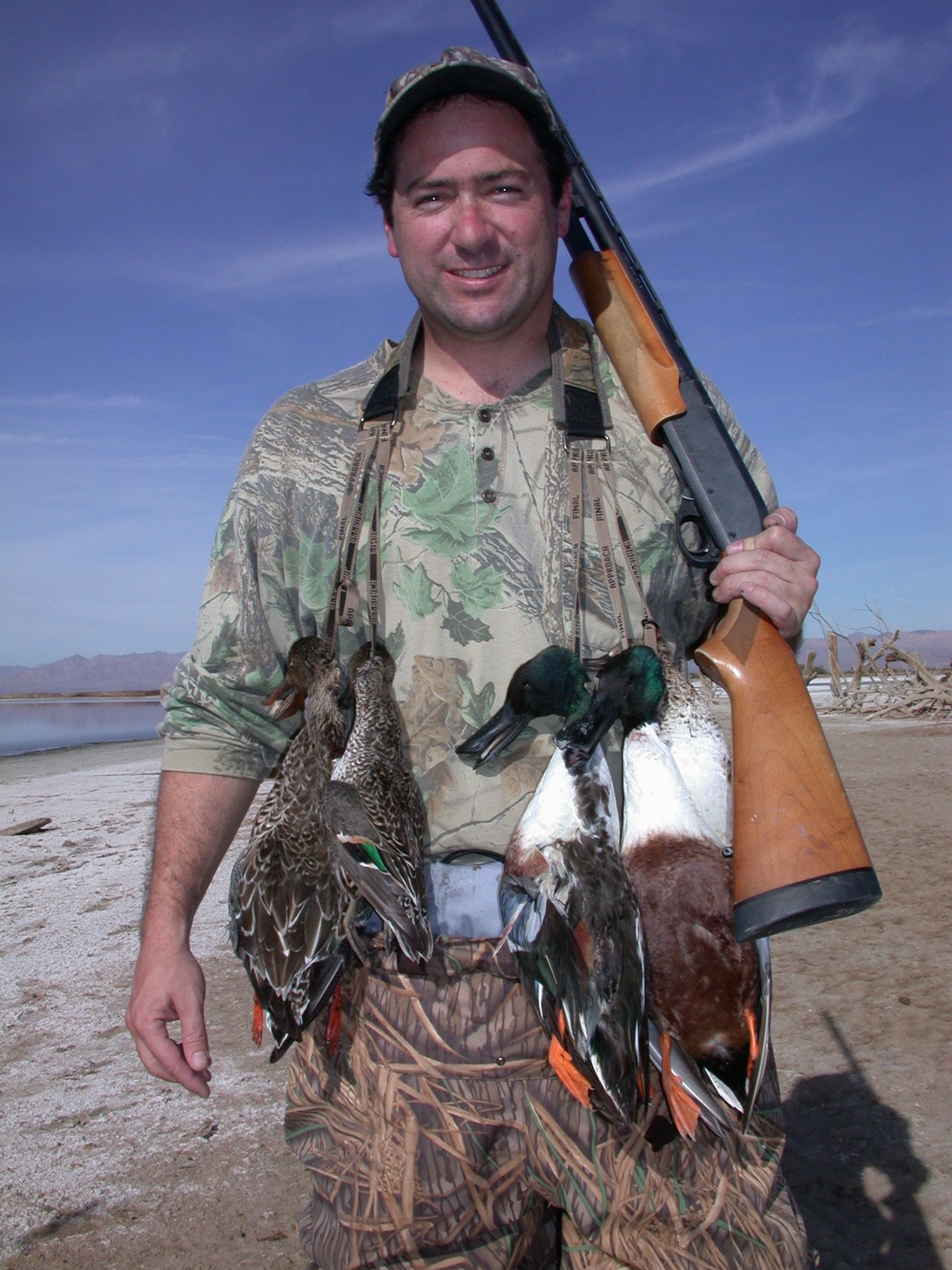Salty Ducks In The Desert
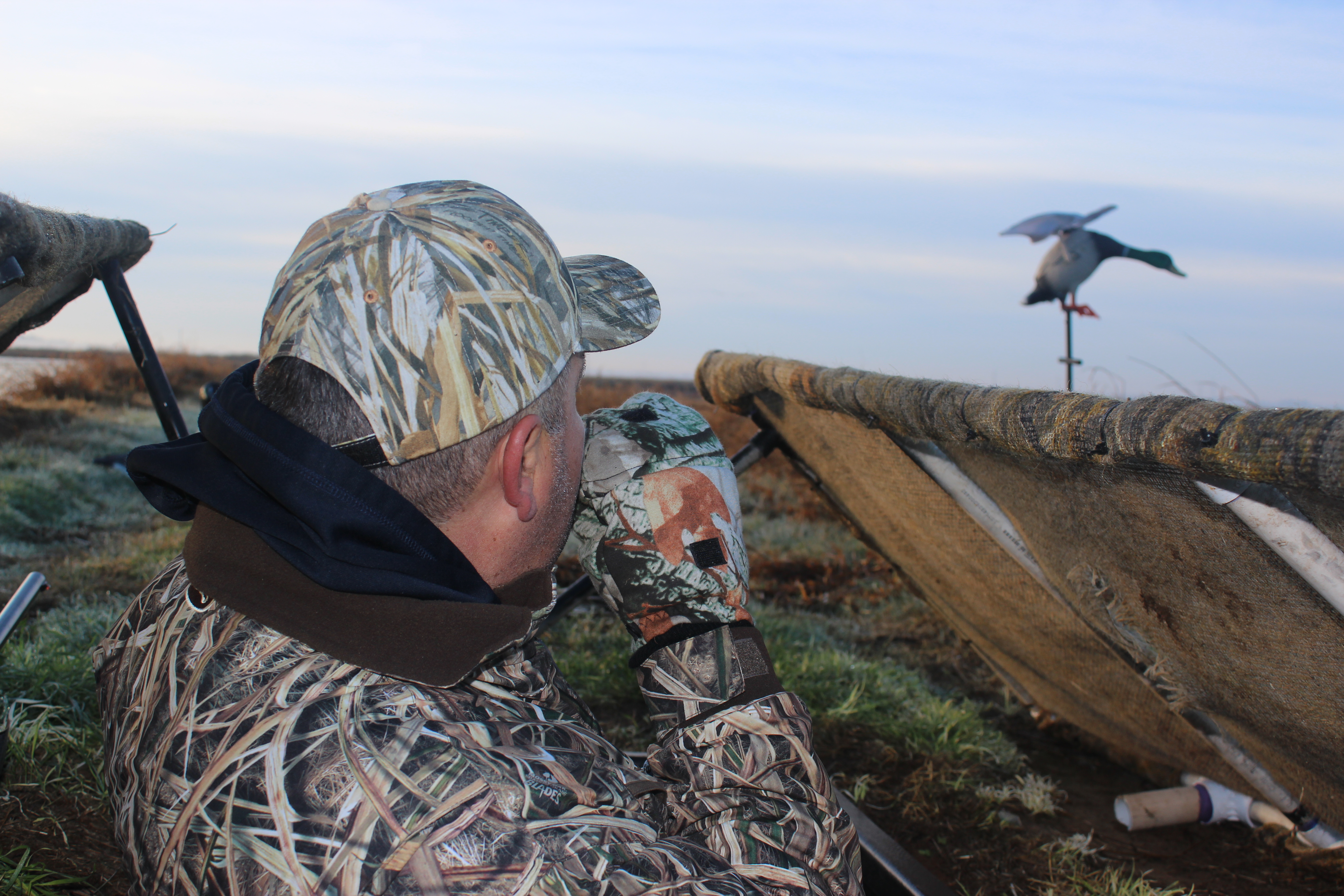
The following story appears in the October issue of California Sportsman:
By Tim E. Hovey
My first sight of the Salton Sea occurred back in 1991. I was on a college driving trip to Mexico and we stopped off near the sea to regroup before we crossed over the border at Calexico.
At the time, the only impression the body of water made on me was the smell. I was just getting back into hunting, and despite the immense amount of waterfowl habitat bordering the Salton, I wouldn’t discover its hunting opportunities until years later. After college I found myself employed in nearby San Diego as a marine biology consultant. That’s where I met Darrin Bergen, now a good friend. He was a fisheries tech at the same institute and while he wasn’t there very long, we reconnected a few years later when we were both hired by the same resource agency on the same day.
During lunch one afternoon, we discussed getting out for a waterfowl hunt. Darrin had done his homework and explained to me that the Wister Unit of the state’s Imperial Wildlife Area was probably our best opportunity. Wister sits on the eastern side of the Salton Sea and offers waterfowl hunters structured blinds and wetland areas to hunt during the season. These locations are handed out to hunters in a numbered system on a first-come, first-served basis.
Darrin also suggested that we do a bit of exploring around the sea itself. Some sections of the large lake are open for hunting without having to fight the crowds at Wister. Being new to the waterfowl scene, exploring on our own is where we decided to start.
DEATH MARCH
On the morning of the hunt, I loaded up my gear into Darrin’s late-model Ford F-150 pickup. We headed out at 3 a.m. to get to the area we had mapped out before sunrise. Some of the wardens from our California Department of Fish and Wildlife office pointed us to a couple of spots that looked promising. One particular elevated blind a short distance from the shore appealed to both of us.
We arrived at the edge of the Salton about 45 minutes before sunrise. The signs clearly suggested we leave our vehicle where it was, as the muddy banks and frequent flooding left the access road a complete mess.
We grabbed our bag of plastic decoys, shotguns, waders and packs, and we started walking along the sandy levee in the dark. Consulting the map, we knew we had a bit of a hike to get to our spot, but hearing ducks quacking in the distance had us excited.
The stench of rotting everything was omnipresent during our hike. Close to the blind, we began trudging across the crunchy bank while it was still dark. We had no idea that the shore was covered with the dried carcasses of tilapia, which with every step crunched beneath our feet. At the water, we donned our waders and began wading into the grey-green stew. The bottom was soft and sucked us down at every step.
NO-FRILLS ACCOMMODATIONS
Right at sunup, we thankfully reached the elevated blind and crawled inside. The plywood bottom was absolutely covered with bird droppings. Weathered camo netting and some brush were stacked inside to be used as a cover for the hide. No other comforts were available.
We tossed out the decoys and patiently waited. The ducks began to fly as soon as the sun popped up. We didn’t get too many shot opportunities, but after the flight died down we each had three ducks. We managed to drop two green-winged teal and four shovelers.
Since it was getting hotter and nothing was flying, we decided to call it a day. I was facing the rear of the blind and loading up my pack when I spotted a vehicle near the levee a mile away. It was on the opposite side of the huge cove we were hunting and in the opposite direction of where we had come into the blind. I was about to point it out to Darrin when I realized it was his truck.
We had hiked to the blind in a long arc of over a mile. Now it was time to head back. At the shore we grabbed all our gear and started the long walk to the truck. With heavy waders, muddy boots, shotguns and the heat, it still remains as the most miserable hike of my existence. In fact, if you separated us and simply stated “death march,” both Darrin and I would know exactly what you were talking about.
As the duck hunting years piled up, we began to get more selective on the ducks we harvested and the areas we hunted. We began to seek out preferred blinds rather than just settling for whatever was left at the Wister Unit. We had discovered a few easier locations to hunt on the shores of the sea.
We learned that the teal would probably be the best-tasting ducks in the area and mostly targeted them. After shooting quite a few shovelers, we started to pass on them since they frequently carried a visible parasite that made the breast meat unappealing. Diving ducks also got a free pass, since no matter how we cooked them, we just couldn’t get them to taste good.
Occasionally, ducks of better quality like pintails, mallards and gadwalls would pitch through our decoy sets and offer us a shot. If we picked our Wister blinds carefully, we’d get into snow geese, and each of us took our first big white birds there.
COMING INTO THEIR OWN
With more trips came more experience. We began to better understand how to arrange our decoys so they were more attractive to flying birds. Our decoy collection had quadrupled since we started, and after consulting other hunters, books and the internet, we started to incorporate special placement patterns for our sets. We preferred the open V-space in front, allowing landing birds to splash down directly in front of us. To us, it really didn’t matter which ducks showed up during the hunt. We enjoyed the anticipation of the early-morning flight and the adventure.
During those early years the duck limit was seven a day. While we had come close on several occasions to individual limits, we had yet to bag a limit of ducks. That would finally change towards the middle of our fourth season.
One November morning, Darrin and I had decided to hunt a section of the sea we called the “Edge.” It was located at the edge of the Wister Unit and adjacent to some amazing habitat. A huge stump tangled with deadfalls and branches served as a blind and the muddy bottom was usually firm enough to walk on when setting decoys and retrieving downed birds.
After kicking a raccoon out of the blind, we set up and waited. The teal were first and they came in like fighter jets in formation. Small, fast and hard to hit, we both pulled a few from the early-morning flight. A bit later, a small group of mallards teased us, but they clearly didn’t like our decoys and scooted off out of range.
Groups of shovelers flared at our set-up and paid the price. We learned that not all shovelers had the parasite; this season we had harvested a few that looked perfectly healthy.
As the morning flight dropped off, a single teal dropped in and offered me a perfect flaring shot. The duck hit the water and my first-ever waterfowl limit was in the books.
On the drive home, I stopped off at an RV park to visit my parents. They were vacationing nearby and I told them I’d drop by for a visit. My dad seemed especially impressed with the duck limit and I decided to breast out a few for them to try.
SALTON SEA MEMORIES
I can’t remember the last time I hunted the Salton Sea. I can only tell you that between 1999 and 2004 I was down there a lot. I thoroughly enjoyed our hunts at the Wister Unit and the areas we discovered while exploring the shores of the sea. Both Darrin and I learned the intricacies of waterfowl hunting standing in that stinky water and peering through the reeds. As a hunter, those memories are some of my best.
In 2004 Darrin moved out of state and that same year I transferred north. Our hunts together are now planned way in advance and only occur once or twice a year. He remains one of my closest friends and now enjoys the rank of “Uncle” to my daughters. I still feel an immense amount of appreciation that we conquered the shores of this inland sea in search of ducks together.
As the saying goes, the journey means so much more when you travel with the right people. I feel privileged to have shared a blind with a great friend while we chased the ducks of the Salton Sea. CS

